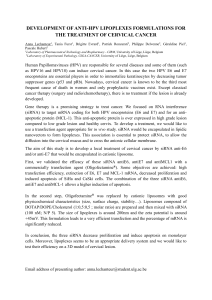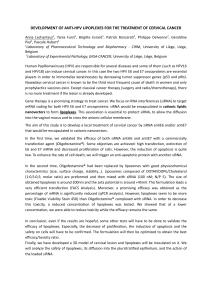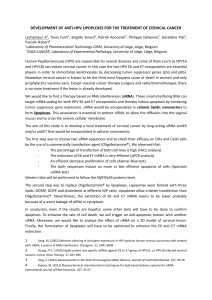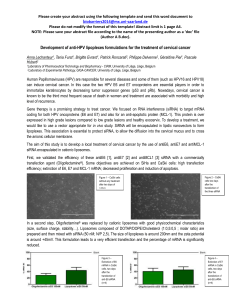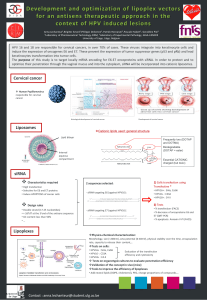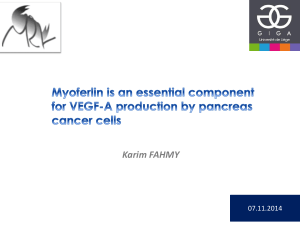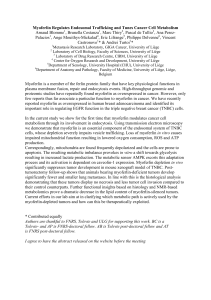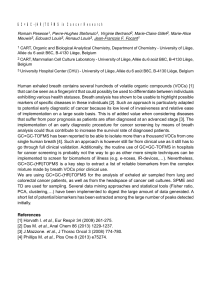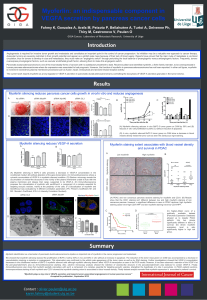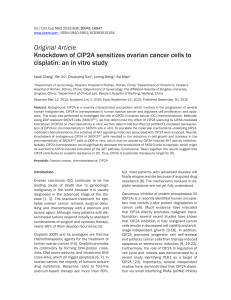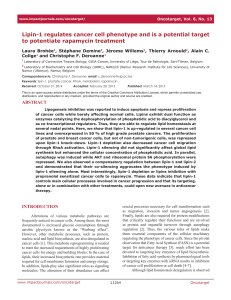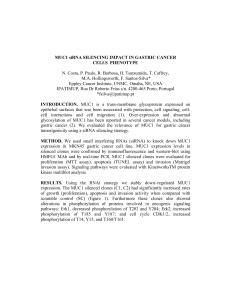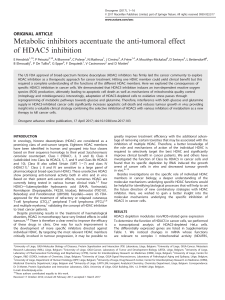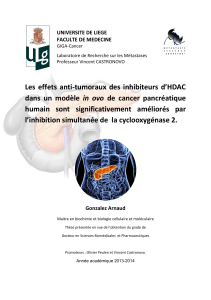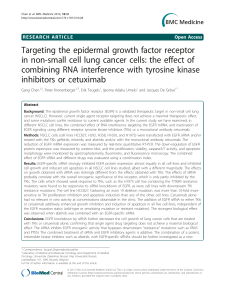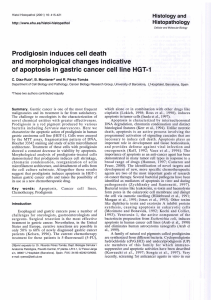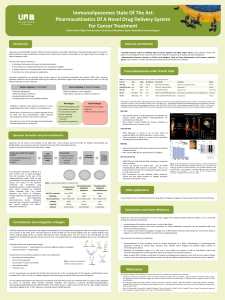Open access
publicité
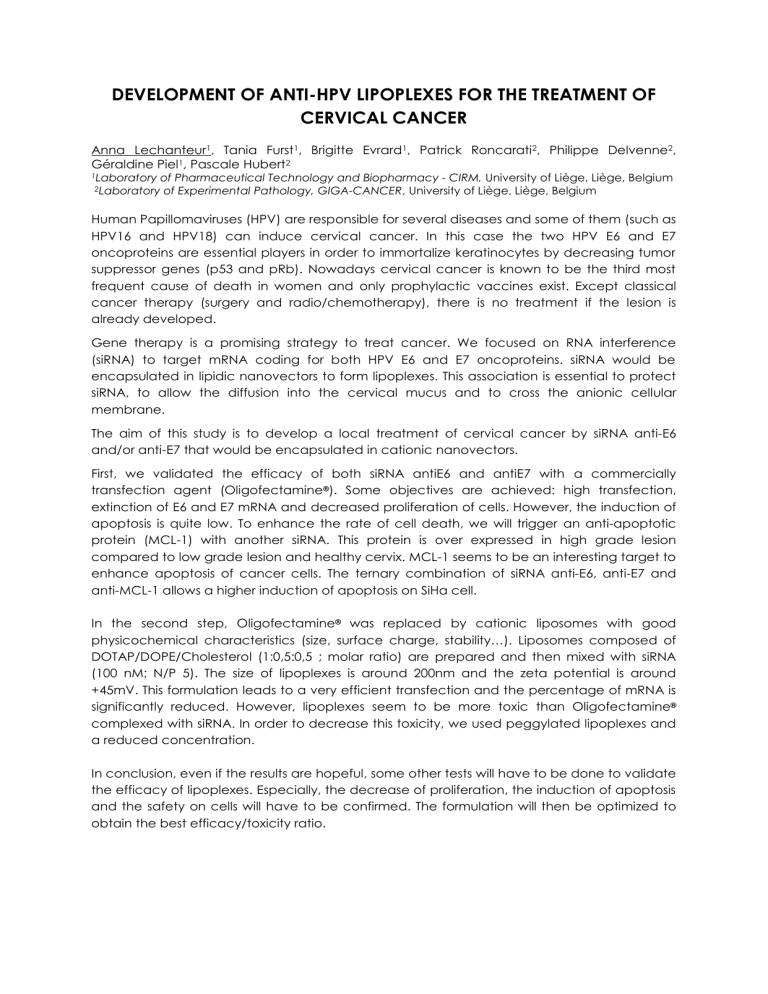
DEVELOPMENT OF ANTI-HPV LIPOPLEXES FOR THE TREATMENT OF CERVICAL CANCER Anna Lechanteur1, Tania Furst1, Brigitte Evrard1, Patrick Roncarati2, Philippe Delvenne2, Géraldine Piel1, Pascale Hubert2 1Laboratory of Pharmaceutical Technology and Biopharmacy - CIRM, University of Liège, Liège, Belgium of Experimental Pathology, GIGA-CANCER, University of Liège, Liège, Belgium 2Laboratory Human Papillomaviruses (HPV) are responsible for several diseases and some of them (such as HPV16 and HPV18) can induce cervical cancer. In this case the two HPV E6 and E7 oncoproteins are essential players in order to immortalize keratinocytes by decreasing tumor suppressor genes (p53 and pRb). Nowadays cervical cancer is known to be the third most frequent cause of death in women and only prophylactic vaccines exist. Except classical cancer therapy (surgery and radio/chemotherapy), there is no treatment if the lesion is already developed. Gene therapy is a promising strategy to treat cancer. We focused on RNA interference (siRNA) to target mRNA coding for both HPV E6 and E7 oncoproteins. siRNA would be encapsulated in lipidic nanovectors to form lipoplexes. This association is essential to protect siRNA, to allow the diffusion into the cervical mucus and to cross the anionic cellular membrane. The aim of this study is to develop a local treatment of cervical cancer by siRNA anti-E6 and/or anti-E7 that would be encapsulated in cationic nanovectors. First, we validated the efficacy of both siRNA antiE6 and antiE7 with a commercially transfection agent (Oligofectamine®). Some objectives are achieved: high transfection, extinction of E6 and E7 mRNA and decreased proliferation of cells. However, the induction of apoptosis is quite low. To enhance the rate of cell death, we will trigger an anti-apoptotic protein (MCL-1) with another siRNA. This protein is over expressed in high grade lesion compared to low grade lesion and healthy cervix. MCL-1 seems to be an interesting target to enhance apoptosis of cancer cells. The ternary combination of siRNA anti-E6, anti-E7 and anti-MCL-1 allows a higher induction of apoptosis on SiHa cell. In the second step, Oligofectamine® was replaced by cationic liposomes with good physicochemical characteristics (size, surface charge, stability…). Liposomes composed of DOTAP/DOPE/Cholesterol (1:0,5:0,5 ; molar ratio) are prepared and then mixed with siRNA (100 nM; N/P 5). The size of lipoplexes is around 200nm and the zeta potential is around +45mV. This formulation leads to a very efficient transfection and the percentage of mRNA is significantly reduced. However, lipoplexes seem to be more toxic than Oligofectamine® complexed with siRNA. In order to decrease this toxicity, we used peggylated lipoplexes and a reduced concentration. In conclusion, even if the results are hopeful, some other tests will have to be done to validate the efficacy of lipoplexes. Especially, the decrease of proliferation, the induction of apoptosis and the safety on cells will have to be confirmed. The formulation will then be optimized to obtain the best efficacy/toxicity ratio.
